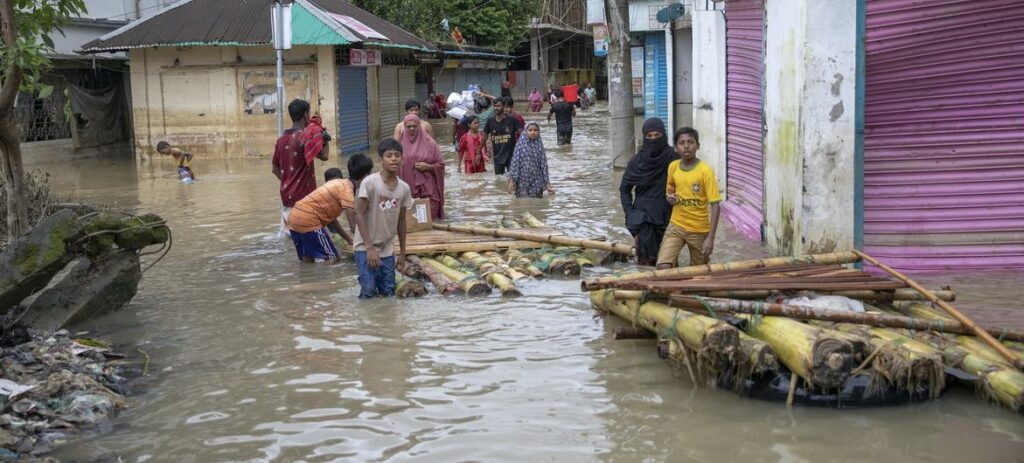The worst affected regions are Chattogram and Sylhet, where major rivers are flowing “well above the danger mark”, further aggravating the situation. according to to the UN Children’s Fund (UNICEF).
Early estimates suggest that around five million people, including two million children, have been affected, with many without food and aid.
Source: OCHA
Impact of cyclone and monsoon floods in Bangladesh (May to August 2024)
Twenty deaths were reported on Tuesday and another 285,000 people have sought refuge in more than 3,500 shelters, UNICEF said.
Massive damage has also been reported to roads, farmlands and fishing areas, severely impacting people’s livelihoods.
Search and rescue operations led by the government are still ongoing, but some areas remain inaccessible.
UN partners in some areas have reported that water levels are not expected to recede in the coming week, raising the risk of continued flooding and the associated threat of water-borne and vector-borne diseases.
Exceptional rainfall in eastern India
According to local media, the eastern Indian state of Tripura was hit by extreme rainfall that lasted for more than 72 hours about ten days ago, resulting in some of the worst flooding since 1983.
The rainfall and more than 2,000 resulting landslides have reportedly affected 1.7 million people, of whom about 117,000 have been displaced and taken to relief camps by district authorities.
At least 26 people are said to have died, the UN Office for the Coordination of Humanitarian Affairs said (OCHA) saidreferring to civil servants.
The government is currently taking action and the water level is reportedly dropping.
Several landslides have also been reported in the northern state of Himanchal Pradesh since late July, killing several people.
© UNICEF/Vlad Sokhin
In western Nepal, a girl sits on the edge of a cliff overlooking a massive landslide caused by the 2023 monsoon rains.
Climate change effects in Nepal
The monsoon season also brought chaos to Nepal, a country on the frontline of climate change. The weather was more erratic and violent, and glaciers warmed rapidly, leading to severe flooding and landslides.
Flooding from a glacial lake in the country’s Everest region has wiped out the village of Thame, which is at an elevation of about 3,800 metres (12,500 ft) and is popular with hikers.
There were no deaths or serious injuries, but more than a dozen houses and small hotels, a school and a health center were washed away.
Elsewhere in the country, however, the 2024 monsoon season has left more than 200 dead, including in the capital Kathmandu.
In a particularly tragic incident, some 65 people were killed when two buses were pushed into a swollen river last month. Authorities have only been able to recover the remains of three people, while a search is still ongoing.
Reaction in Pakistan continues
In Pakistan, disasters have killed 243 people since July, about half of them children, underscoring their increased vulnerability, OCHA said reported.
Flooding also caused “extensive damage” to livelihoods and essential infrastructure, including schools and bridges.
Assessments and responses continue, with humanitarian partners and authorities reporting that food, clean water, medical supplies and hygiene kits are the main needs.

